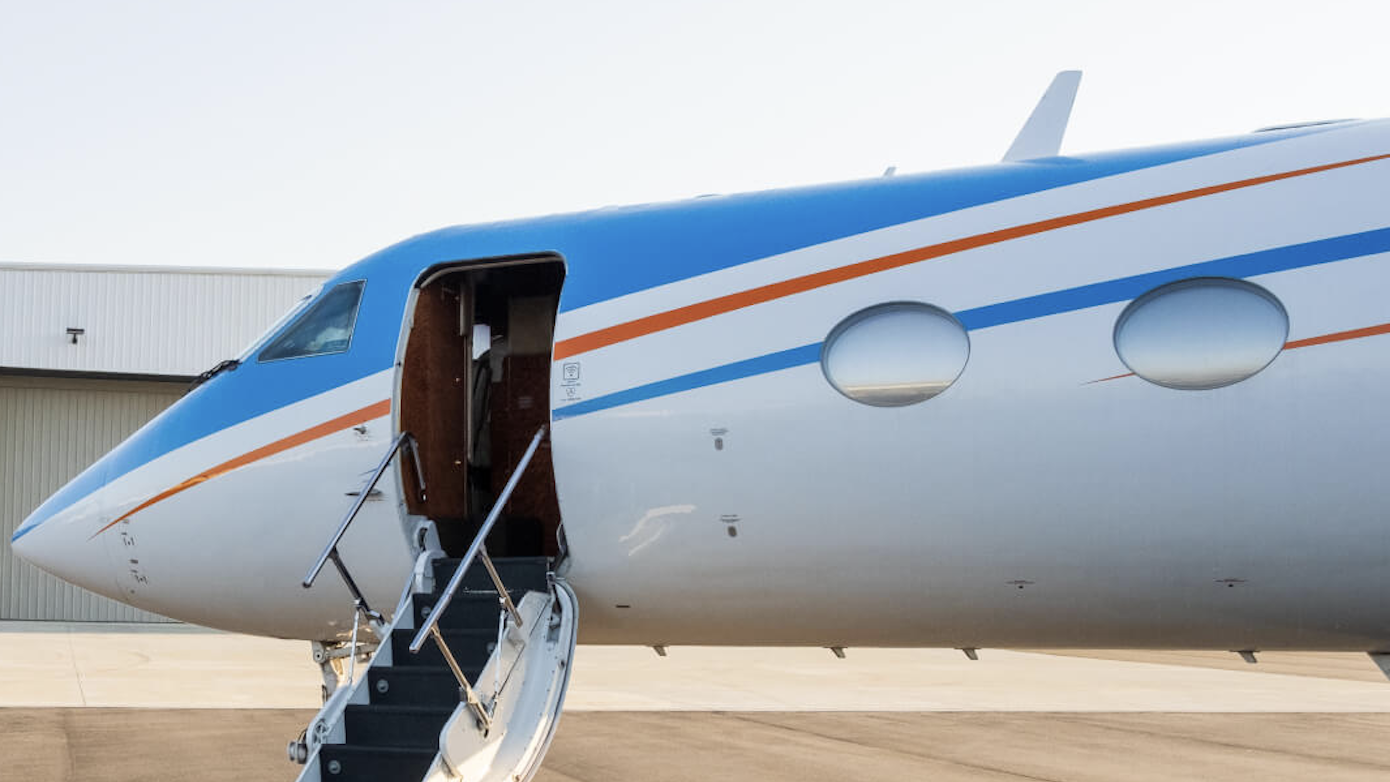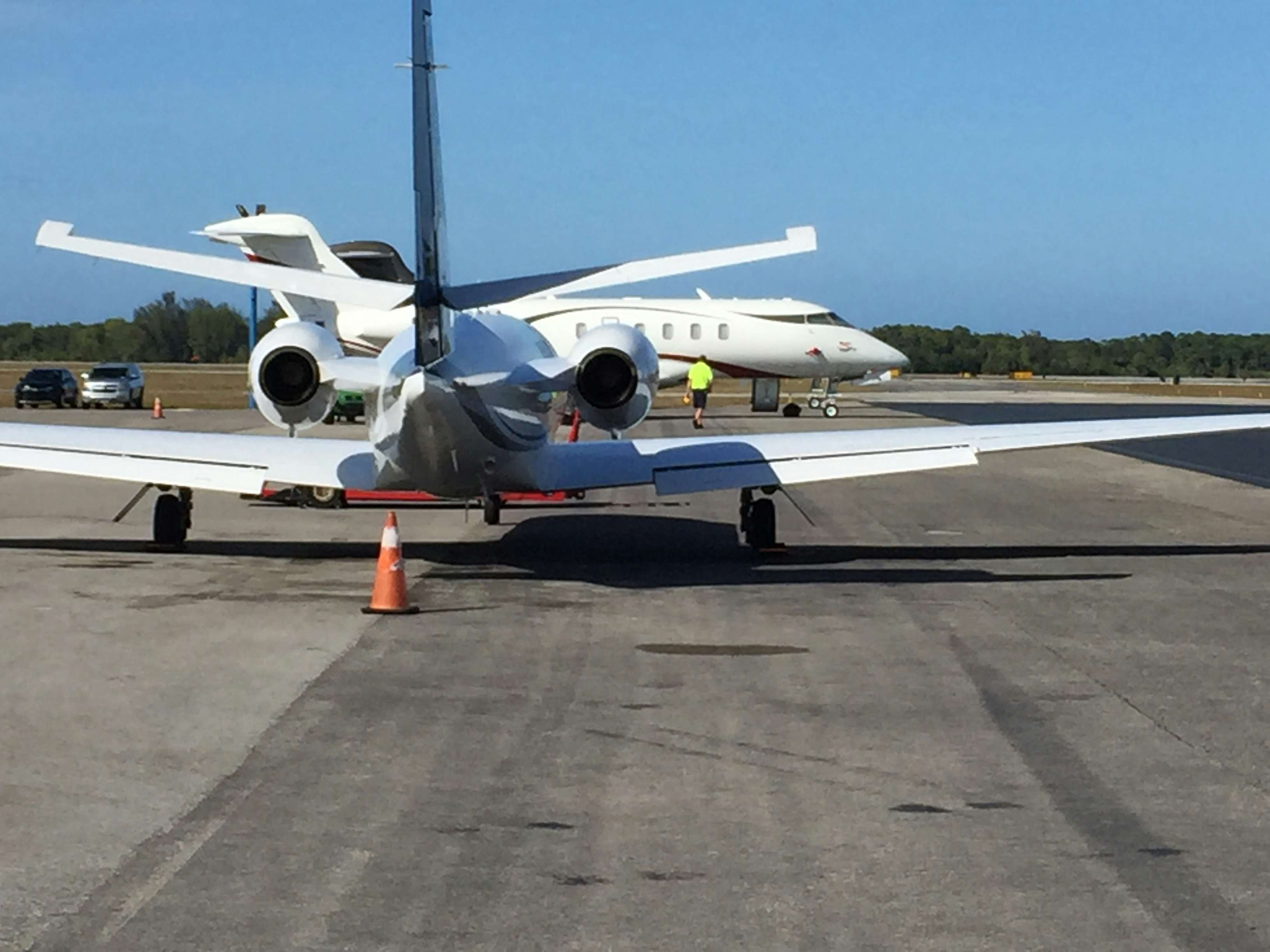
After a tightening of terms and spiking prices, Jet Card policies are loosening up and flight cost is coming down.

Published Jet Card prices, Peak Days, and Daily Minimums continue to drop. However, the lead time to book at contracted rates continues to increase, according to an analysis by Private Jet Card Comparisons.
What’s more, subscribers to the buyer’s guide say they are negotiating additional discounts.
The insights are based on North American jet card and membership programs offering guaranteed availability and fixed/capped hourly rates.
The average Jet Card hourly rate at the end of Dec. 2023 dropped to $10,754.
That represented a 9.2% drop from the end of 2022.
Without turboprops, the average jet card rate was $11,030, down 7.7% from Q4 2022.
Hourly rates include fuel surcharges and 7.5% Federal Excise Tax.
After peaking in Dec. 2022, jet card rates declined throughout 2023.
For example, light jet rates fell from $8,379 per hour to $7,298 per hour, a 12.9% drop.
| HOURLY RATES | Dec. 2019 | Dec. 2020 | Dec. 2021 | Dec. 2022 | Dec. 2023 |
| Turboprop | $ 4,762 | $ 4,454 | $ 5,982 | $ 7,348 | $ 6,269 |
| Very Light | $ 5,653 | $ 5,102 | $ 6,724 | $ 8,379 | $ 7,298 |
| Light | $ 6,023 | $ 5,600 | $ 6,978 | $ 8,462 | $ 7,918 |
| Midsize | $ 7,531 | $ 6,961 | $ 7,985 | $ 9,806 | $ 9,168 |
| Super Midsize | $ 10,042 | $ 9,190 | $ 10,570 | $ 12,675 | $ 11,793 |
| Large | $ 13,033 | $ 12,109 | $ 13,229 | $ 16,108 | $ 15,339 |
| Ultra-Long-Haul | $ 16,834 | $ 15,316 | $ 17,339 | $ 20,646 | $ 18,753 |
| Overall | $ 8,860 | $ 8,405 | $ 9,706 | $ 11,748 | $ 10,754 |
| Without Turboprops | $ 9,193 | $ 8,631 | $ 9,850 | $ 11,955 | $ 11,030 |
Source: Private Jet Card Comparisons
Hourly prices dipped 2.7% from September to December.
Overall, rates at the end of 2023 were 8.5% lower than those at the close of 2022.
Still, hourly rates were 27.9% higher than in Q4 2020 when the CARES Act waived the 7.5% FET.
Looking back to the end of 2019, before the Covid pandemic generated record demand for private jets, hourly prices were still 21.4% higher at the end of 2023.
According to the U.S. Bureau of Labor Statistics, while $8,860 would have bought you an hour of private jet travel time in Q4 2019, today, it would be $16,164.
| HOURLY RATES | Change – Sept. 23 | Change – 2022 | Change – 2021 | Change – 2020 | Change – 2019 |
| Turboprop | -2.5% | -14.7% | 4.8% | 40.7% | 31.6% |
| Very Light | -1.7% | -12.9% | 8.5% | 43.0% | 29.1% |
| Light | -2.2% | -6.4% | 13.5% | 41.4% | 31.5% |
| Midsize | -2.0% | -6.5% | 14.8% | 31.7% | 21.7% |
| Super Midsize | -2.6% | -7.0% | 11.6% | 28.3% | 17.4% |
| Large | -2.4% | -4.8% | 15.9% | 26.7% | 17.7% |
| Ultra-Long-Haul | -2.3% | -9.2% | 8.2% | 22.4% | 11.4% |
| Overall | -2.7% | -8.5% | 10.8% | 27.9% | 21.4% |
| Without Turboprops | -2.7% | -7.7% | 12.0% | 27.8% | 20.0% |
Source: Private Jet Card Comparisons
While private flyers cite increasing prices as the leading reason for changing providers, they are still faring well, according to the CPI Inflation Calculator.
In other words, private flight prices haven’t kept up with the CPI.
Of course, hourly rates are just one part of what you pay.
Daily Minimums impact flyers with shorter flights since they pay the Daily Minimum even if their actual flight takes less time.
There’s good news here, too.
After Daily Minimums increased from 86.2 minutes in 2019 to 103.3 minutes in 2021, they are now back down to 89.4 minutes.
That’s just 3.7% more than pre-Covid.
| DAILY MINIMUMS (minutes) | Dec. 2019 | Dec. 2020 | Dec. 2021 | Dec. 2022 | Dec. 2023 |
| Light | 78.1 | 79.5 | 87.9 | 75.8 | 71.9 |
| Midsize | 83.7 | 84.1 | 95.8 | 83.0 | 79.7 |
| Super Midsize | 95.7 | 95.3 | 111.5 | 94.1 | 96.5 |
| Large | 101.4 | 98.6 | 125.6 | 110.2 | 121.4 |
| Overall | 86.2 | 85.4 | 103.3 | 94.7 | 89.4 |
Source: Private Jet Card Comparisons
Particularly good news is that Light Jet and Midsize Jet Daily Minimums are lower than in 2019.
Light Jet Daily Minimums went from 78.1 minutes in Dec. 2019 to 87.9 minutes in Dec. 2021.
After falling to 75.8 minutes in Q4 2022, they dropped to 71.9 minutes at the end of last year.
Midsize Jet Daily Minimums took a similar ride, increasing from 83.7 minutes to 95.8 minutes before falling to 79.7 minutes.
While Super Midsize Daily Minimums remain slightly higher than their pre-Covid levels (96.5 minutes vs. 95.7 minutes), they are still down from their 2021 high of 111.5 minutes.
Large Cabin Jets, however, remain nearly 20% above pre-Covid levels.
When it comes to Peak Days, they are down from their high but still more than double what they were in Dec. 2019.
Peak Days often carry surcharges and longer callouts to book and cancel.
Virtually all jet card programs can also move your departure, in some cases, by as much as +/- 4 hours on Peak Days.
The average number of these high-demand days went from 22.8 days in 2019 to 55.7 at the end of 2023.
| PEAK DAYS (hours) | Dec. 2019 | Dec. 2020 | Dec. 2021 | Dec. 2022 | Dec. 2023 |
| Overall | 22.8 | 24.4 | 39.3 | 55.7 | 47.4 |
Source: Private Jet Card Comparisons
They have now dropped to 47.4 dates.
That’s 108% more than before Covid and the surge that caused nearly two dozen providers to suspend jet card sales to new customers.
To use your guaranteed rates, you must book a specific number of hours before departure, or Callouts in industry lingo.
As demand surged, providers increased Callouts as it took longer to secure customer flights.
Sourcing was also hampered by supply chain and labor issues.
While the average Callout was 23.2 hours in Q4 2019, by the end of last year, it had climbed to 64.7 hours.
| CALL OUTS (hours) | Dec. 2019 | Dec. 2020 | Dec. 2021 | Dec. 2022 | Dec. 2023 |
| Overall | 23.2 | 29.0 | 55.9 | 64.7 | 69.3 |
Source: Private Jet Card Comparisons
For the most part, providers are keeping that buffer.
The Callout window increased by 4.6 hours from the end of 2022 to the end of 2023.
While the rates in our analysis are based on published pricing, subscribers say they can negotiate free hours and flight credits more frequently.
The percentage of subscribers who negotiated free hours increased by 39% year-over-year.
Those who were able to gain flight credits jumped by 67%.
Moreover, providers were also more likely to grant rate lock extensions, the period those contracted rates are guaranteed.
Subscribers who say they negotiated rate locks beyond what was offered increased by more than 500%, perhaps indicating where providers believe prices are headed.